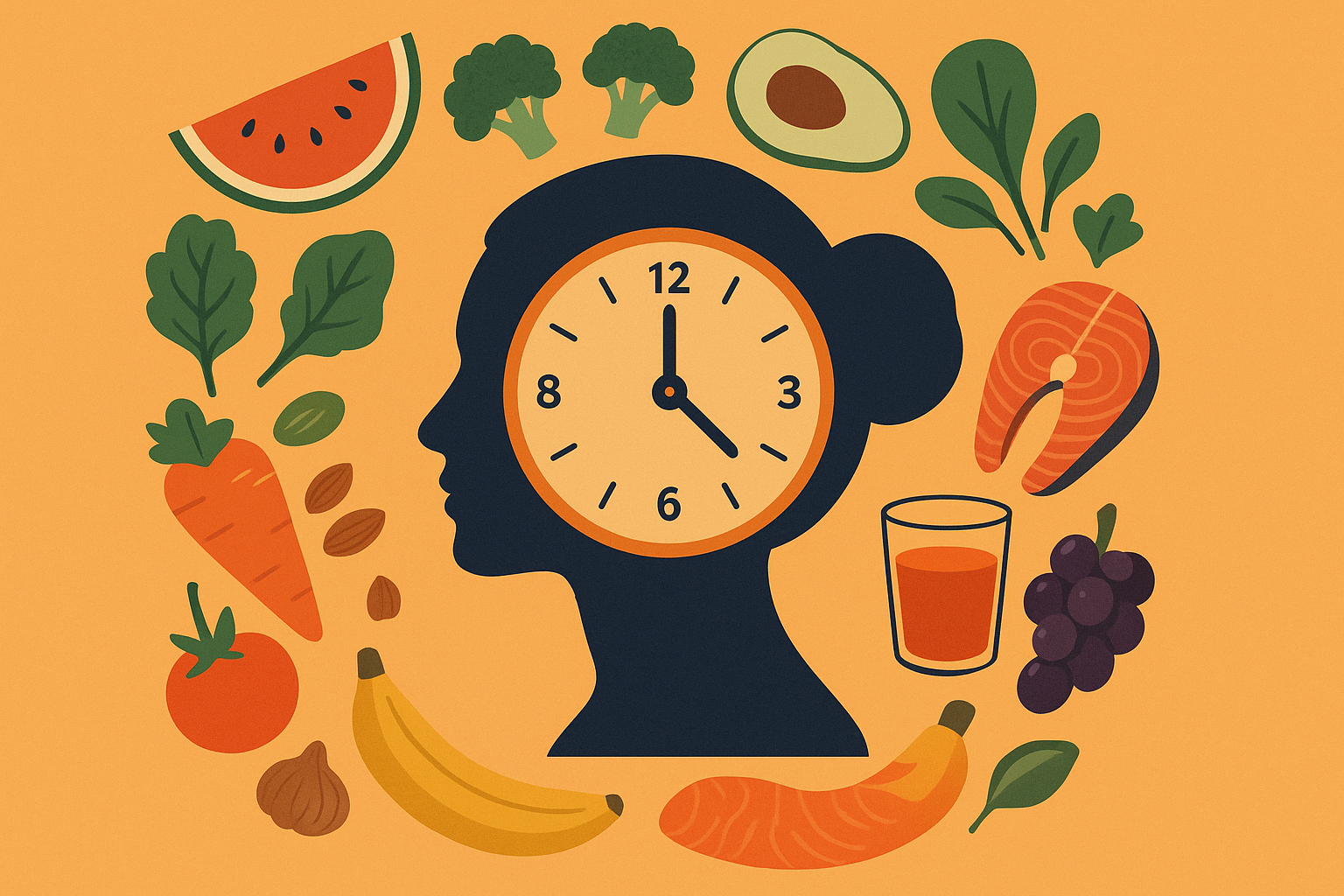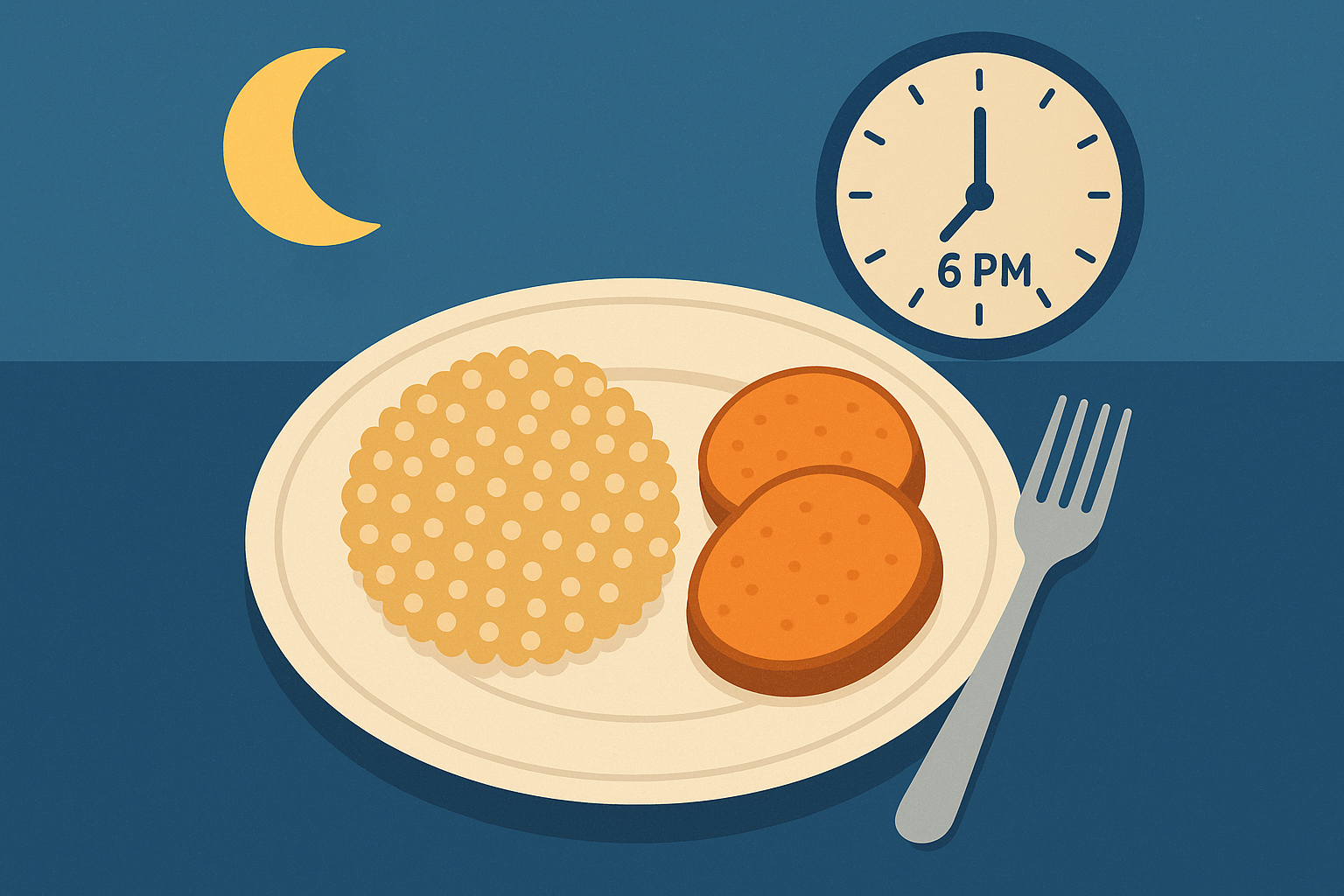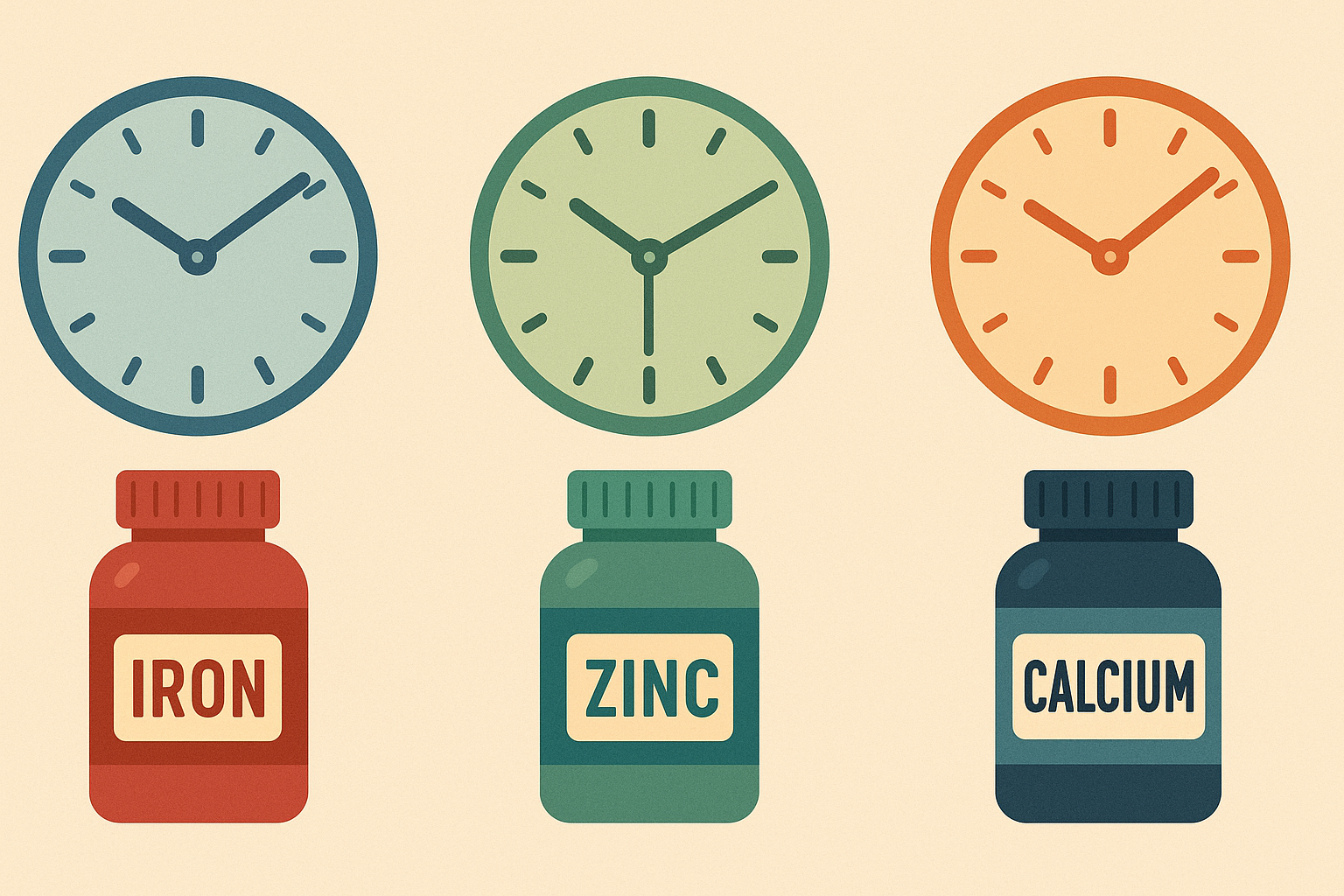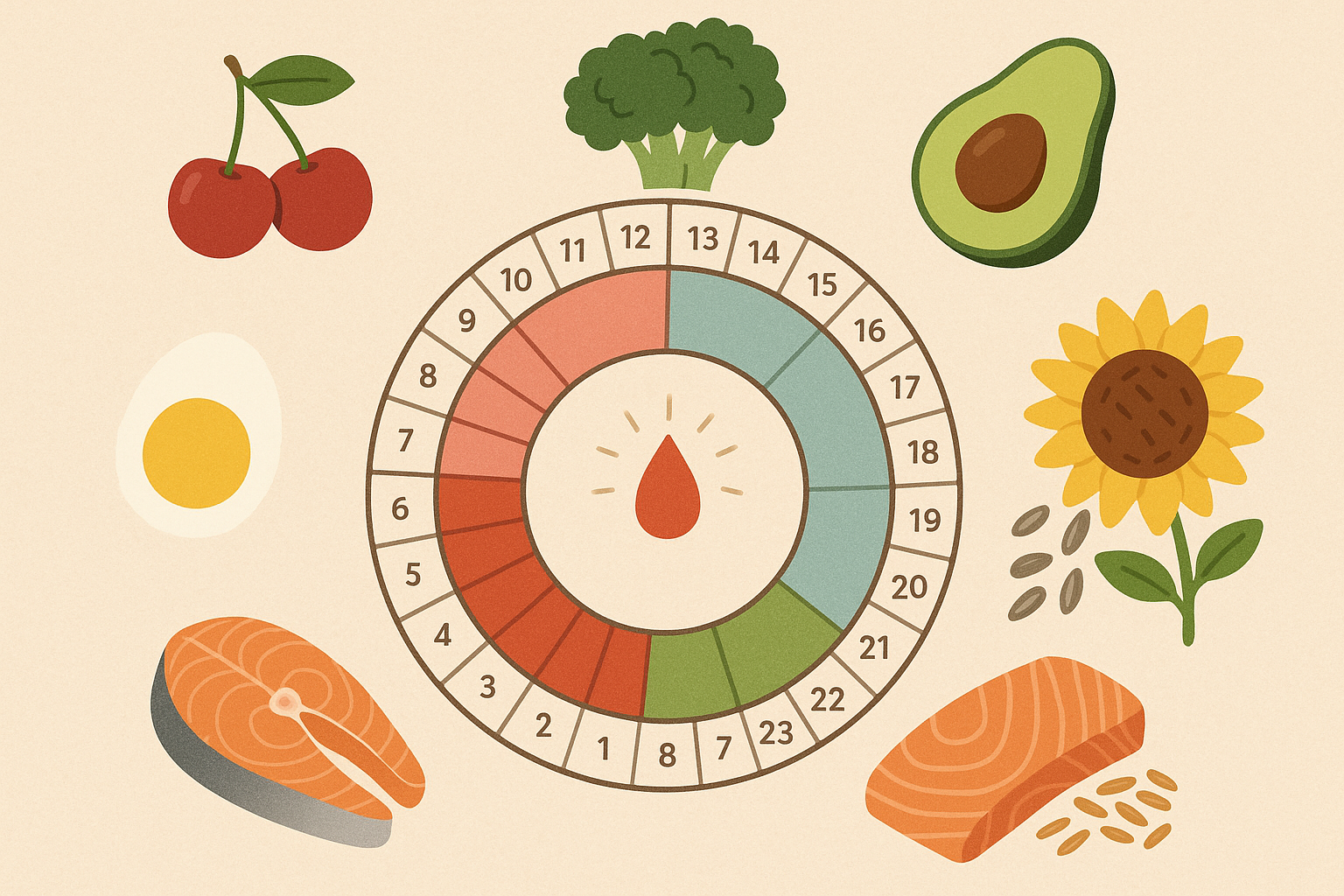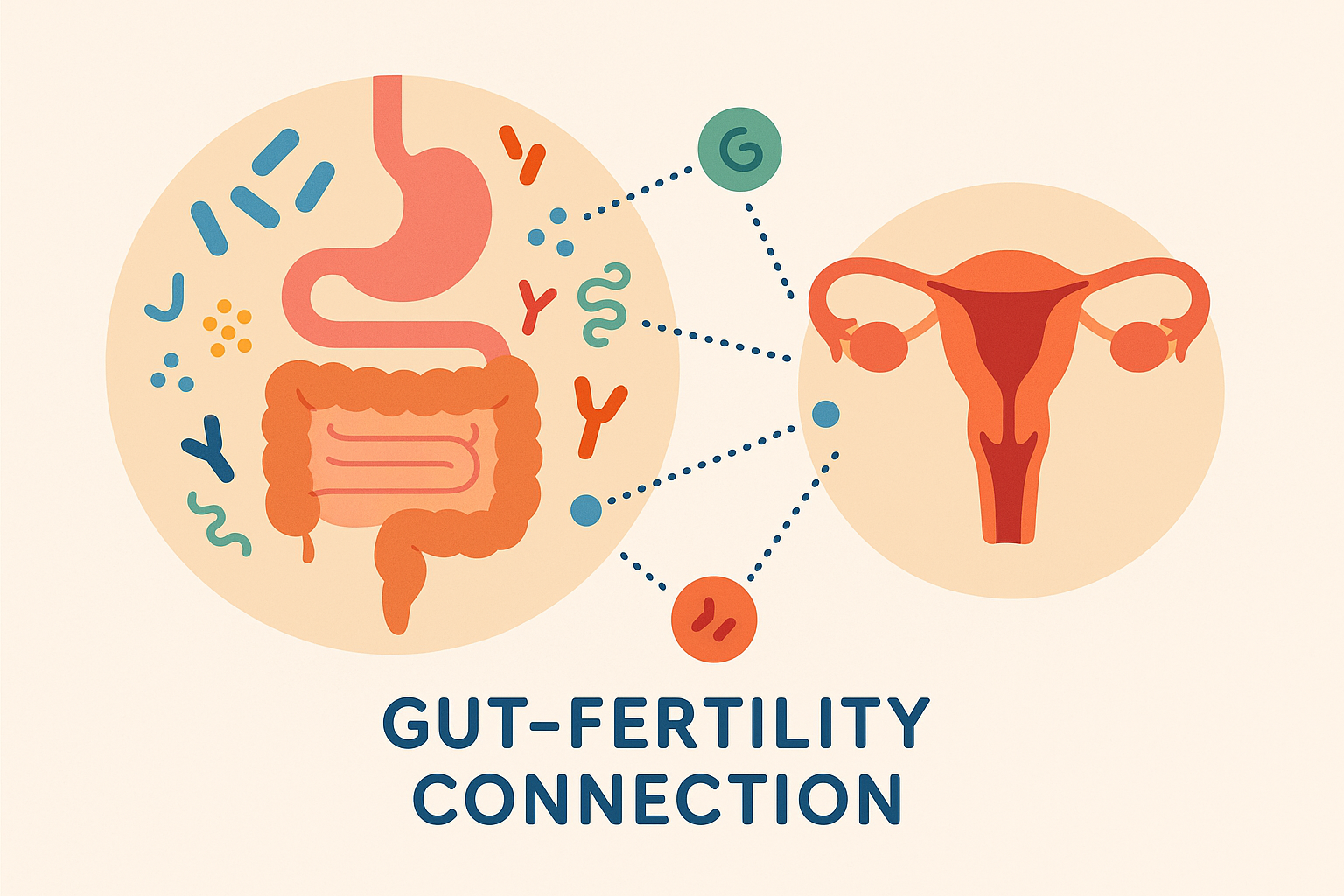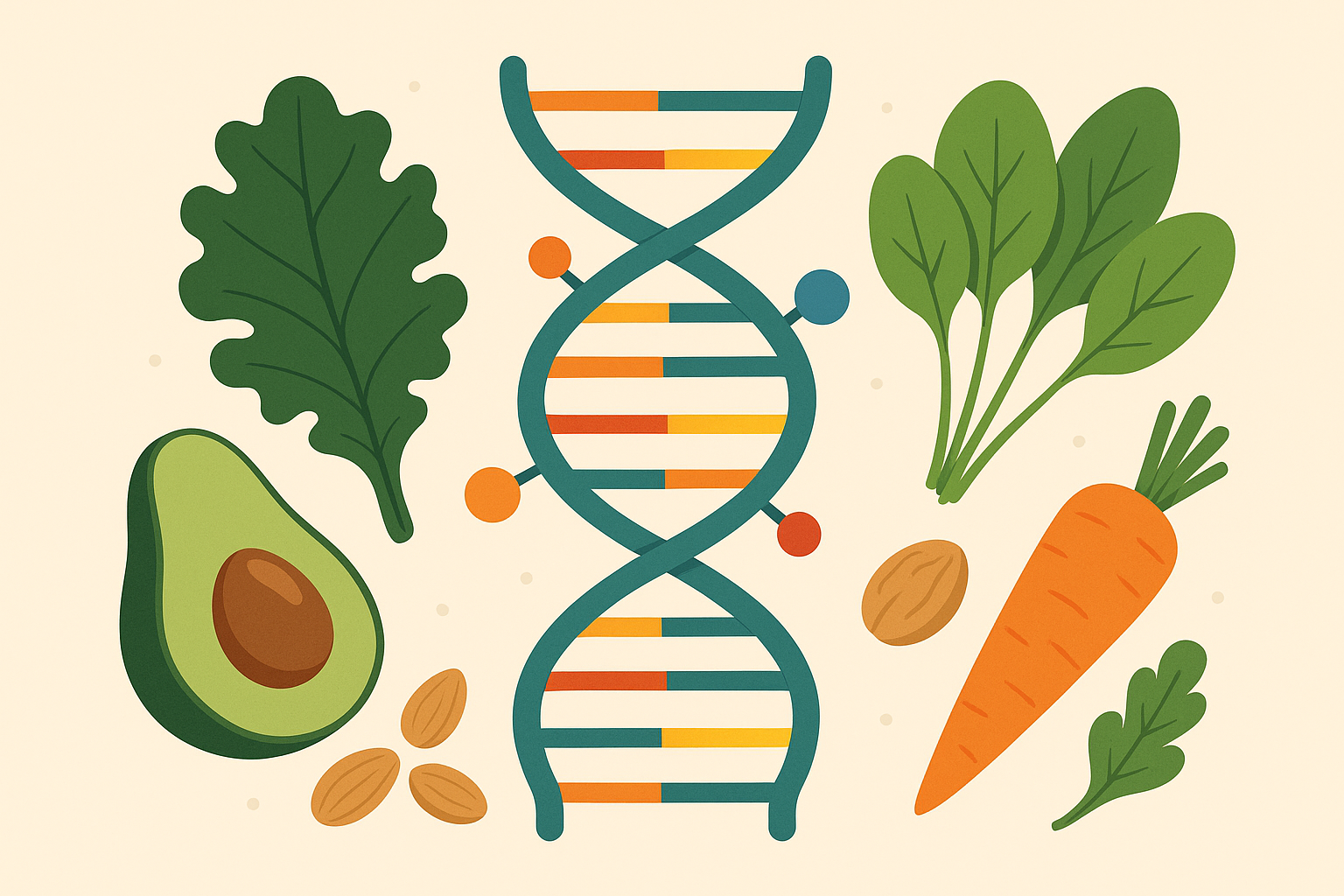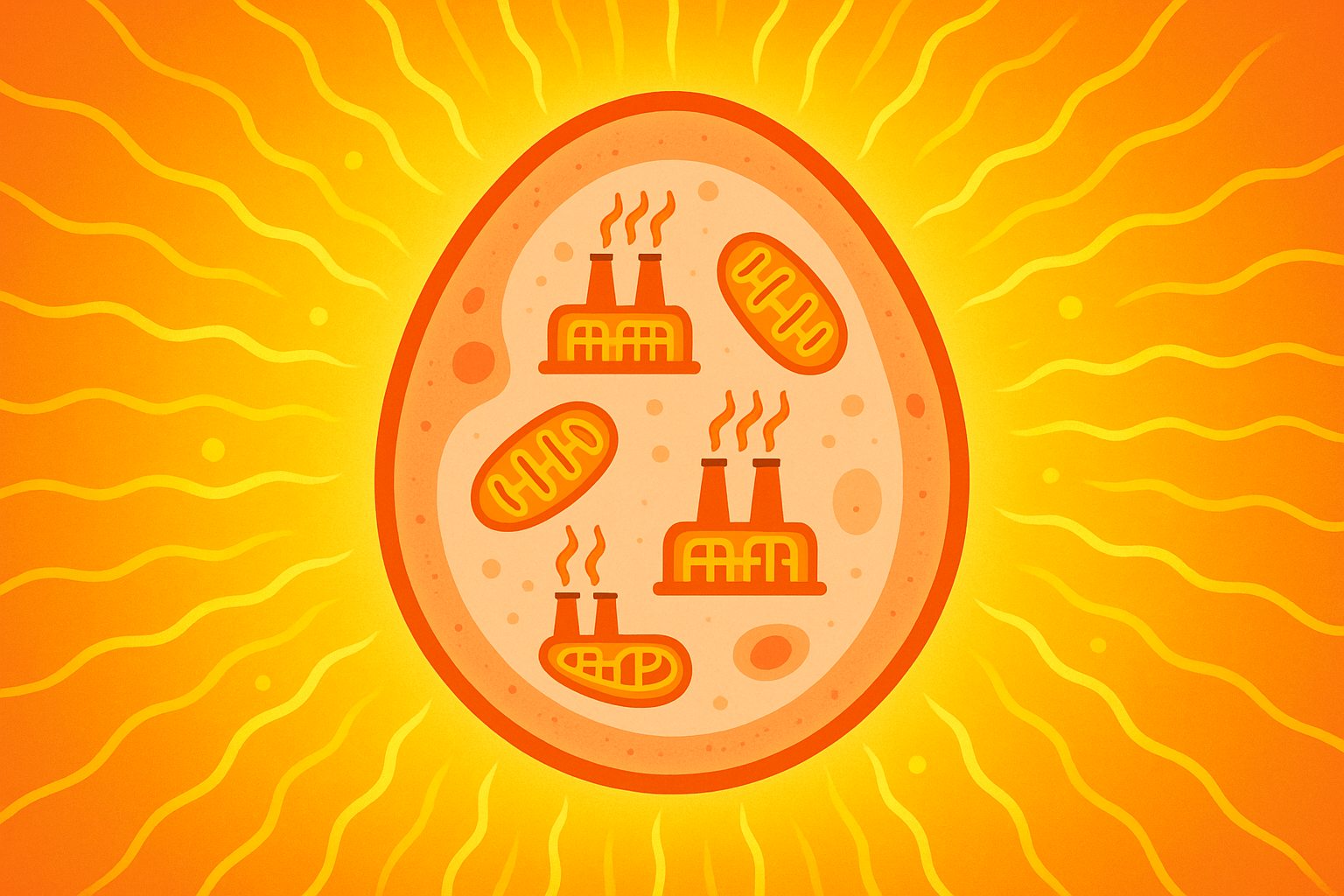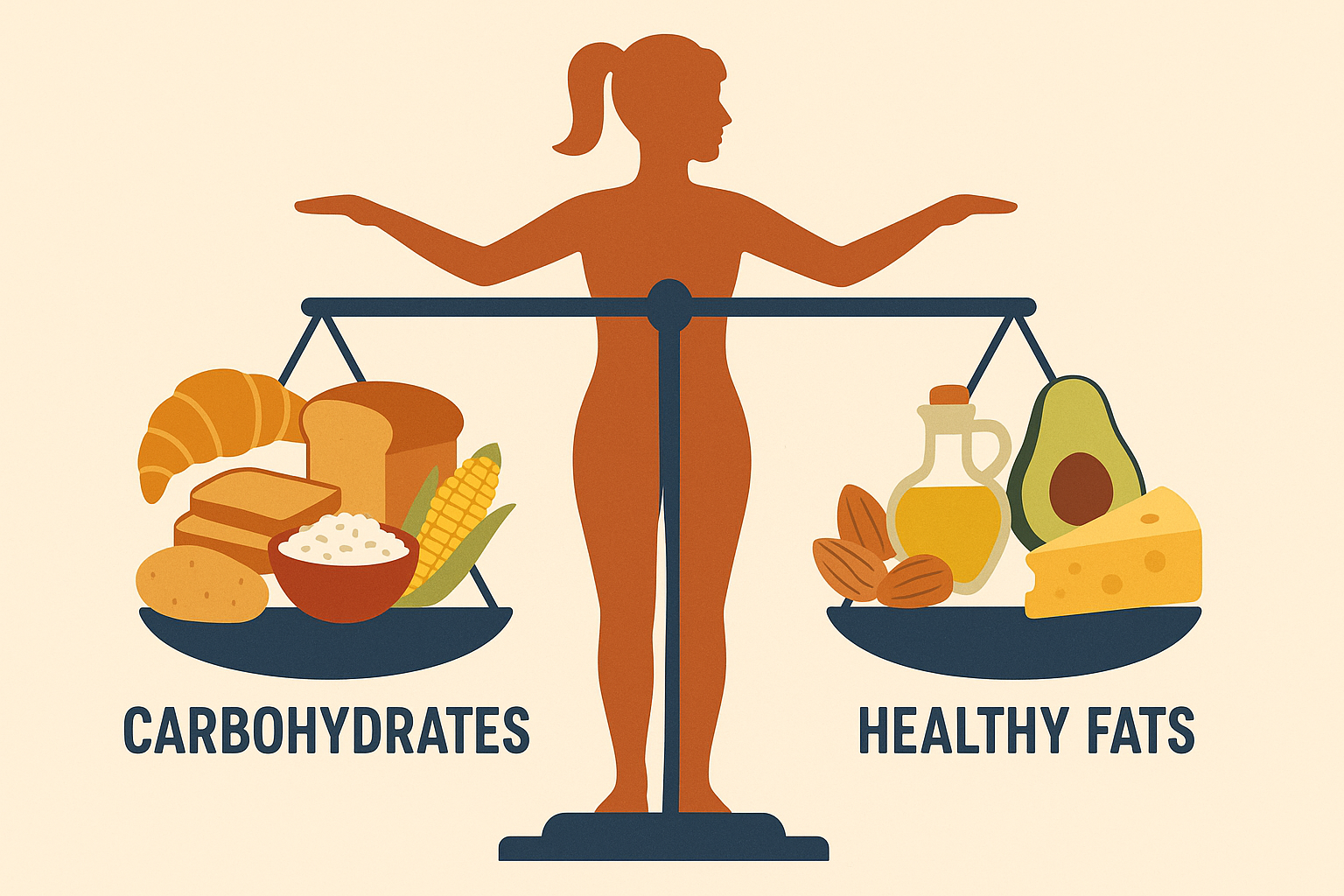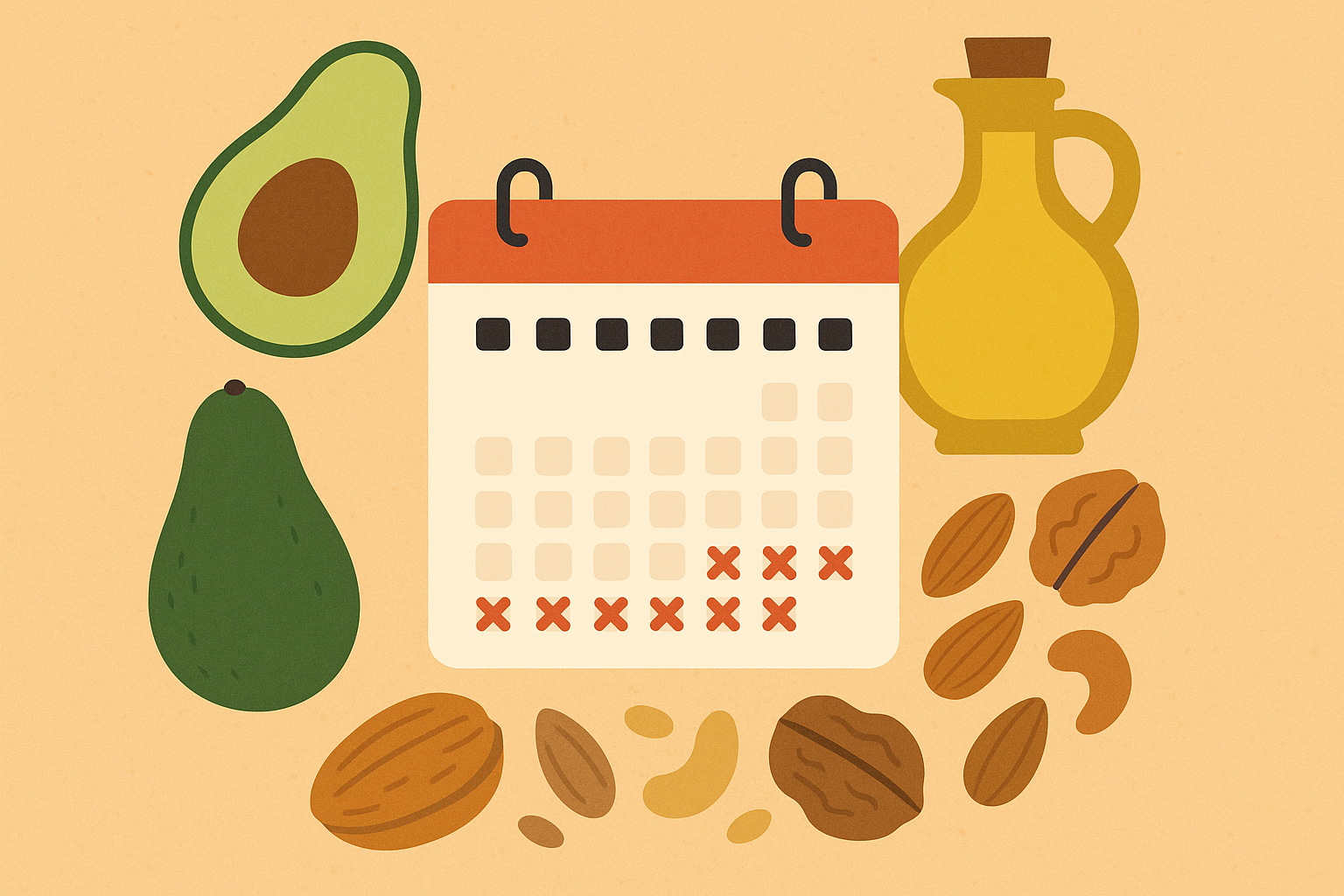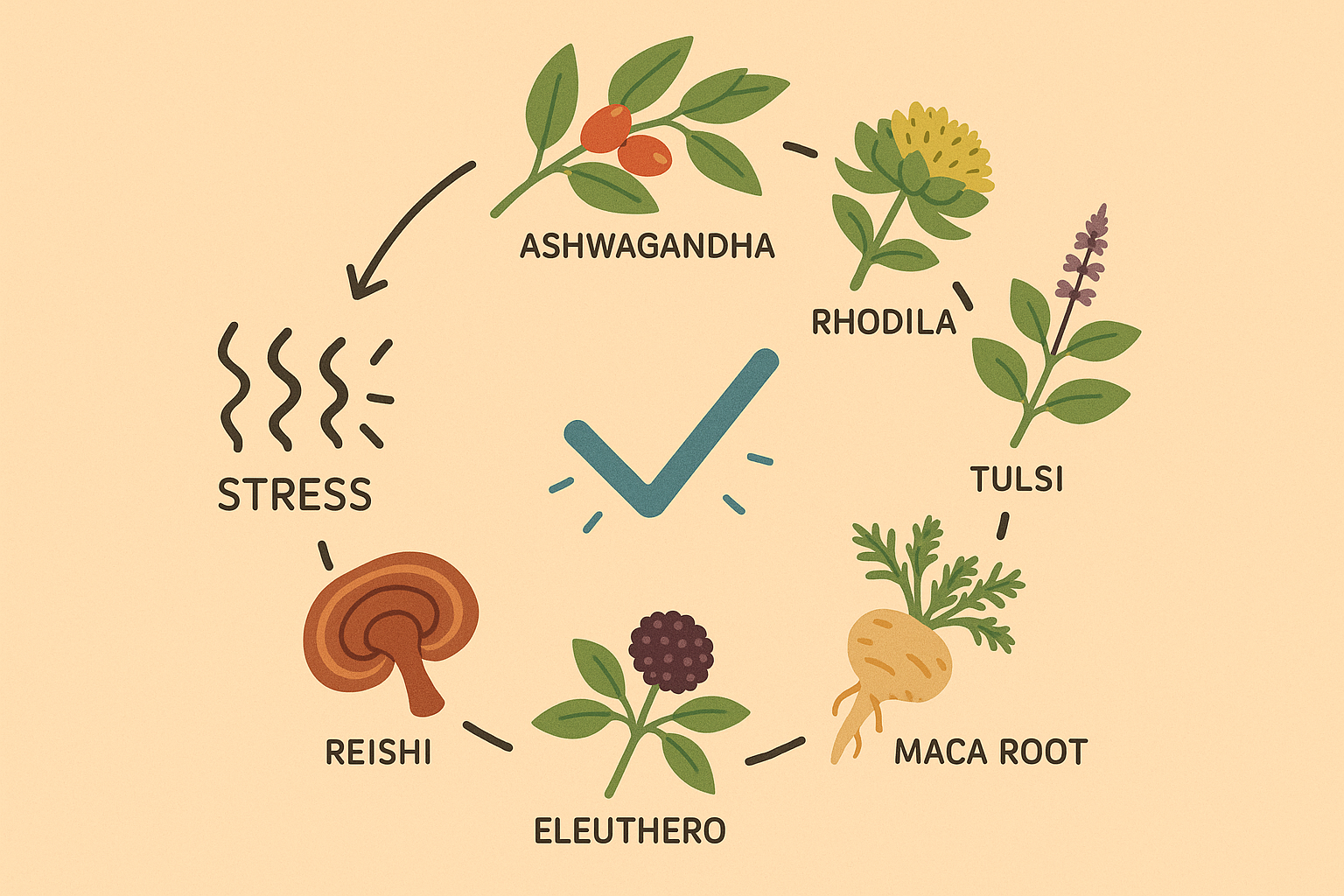Why Timing Your Meals Could Be Your Fertility Game-Changer: The Science-Backed Revolution That Changes Everything

Table of Contents
- Why Timing Your Meals Could Be Your Fertility Game-Changer
- Eating the Right Foods at the Right Time During Your Cycle
- How Your Food Choices Can Actually Turn Genes On or Off
- Why Flexible Eating Beats Rigid Fertility Diets Every Time
TL;DR
- Timing your nutrients around your body’s natural rhythms can dramatically boost fertility outcomes – it’s not just what you eat, but when you eat it
- Your reproductive hormones follow predictable daily patterns, and aligning your meals with these fluctuations enhances hormone production
- Eating the right foods at the right time during your cycle supports optimal egg quality and reproductive function
- Specific nutrients can influence gene expression related to fertility through targeted methylation support
- Flexible eating patterns that sync with your cycle optimize insulin sensitivity and hormone balance better than rigid dieting
- Your gut bacteria directly influence hormone metabolism – supporting the right strains through targeted feeding improves fertility outcomes
Why Timing Your Meals Could Be Your Fertility Game-Changer
Last month, Jessica texted me at 2 AM: “I’ve tried every fertility diet on Pinterest and I’m exhausted.” Sound familiar? Here’s what I wish someone had told her from the beginning – and what I’m going to tell you right now.
You know what’s frustrating? I’ve watched so many women beat themselves up thinking they’re doing fertility nutrition “wrong” when really, they just had the timing off. It’s like showing up to a great party… at the wrong time.
Here’s the thing nobody talks about: your body has its own internal schedule, and when you work with it instead of against it, everything gets easier. Your hormones aren’t just randomly doing their thing throughout the day – they’re following a pretty predictable pattern that you can actually use to your advantage.
Recent research shows that WHO reports infertility affects one in six individuals worldwide according to Healio, making this timing-based approach more crucial than ever.
Think of your hormones like a well-choreographed dance routine. When the timing is off, even the best dancers stumble. Your meals are like the music – get the rhythm right, and everything flows beautifully.
According to Fertility Centers of Illinois, eating 25% protein in the diet can boost embryo development, while eating a diet comprised of 40% or less carbohydrates also increases pregnancy rates. These numbers become even more powerful when you time them correctly.
Understanding your body’s natural rhythms is crucial for optimizing reproductive health, just as maintaining proper hormone balance affects overall wellness and fertility potential.
Working With Your Body’s Natural Schedule
Think about it – you probably already know you’re more alert in the morning and sleepy at night, right? Well, your reproductive hormones are doing their own version of this dance, and once you learn the steps, you can join in instead of stepping on their toes.
Your reproductive hormones don’t randomly fluctuate throughout the day – they follow predictable patterns that you can work with strategically. I’ve seen women transform their fertility outcomes simply by aligning their nutrient intake with these natural hormonal fluctuations.
When you eat in sync with your hormone production, you enhance your body’s ability to produce and respond to these crucial reproductive signals. This approach requires understanding exactly when your key hormones peak and what nutrients they need most during those windows.
Here’s what actually works:
- Morning (6-8 AM): Your cortisol is peaking, so give it 25-30g of real protein within 90 minutes of waking up
- Midday (12-2 PM): Your insulin sensitivity is at its best – perfect time for that balanced lunch with complex carbs
- Evening (3-4 hours before bed): Light dinner that won’t interfere with your growth hormone production while you sleep
Look, I’m not going to sugarcoat this – changing your meal timing takes some getting used to. But most of my clients notice they have more steady energy within a week, and their cycles start becoming more predictable within a few months.
Morning Protein Power Windows
Let me be real with you – I used to be a “coffee and maybe a banana” breakfast person. Then I learned about this morning protein window thing and thought, “Great, another thing I’m supposed to do perfectly.” But here’s what I discovered: it’s actually not that hard, and the payoff is huge.
Getting 25-30 grams of complete protein within 90 minutes of waking isn’t just good nutrition advice – it’s a targeted strategy to support luteinizing hormone production and maintain stable blood sugar throughout your fertile window.
When you wake up, your cortisol is naturally high (this is normal and healthy). If you don’t give your body some solid protein fuel during this window, your blood sugar goes on a roller coaster that affects your mood, energy, and yes – your hormones – for the entire day.
Sarah switched from her usual toast to a protein smoothie with Greek yogurt, spinach, and hemp seeds. Nothing fancy, just real food. Three months later, her LH surge became way more predictable, and she got pregnant naturally in her fourth cycle. Coincidence? I don’t think so.
For those seeking additional nutritional support, certain daily supplements can complement your morning protein routine for enhanced fertility benefits.
Easy morning protein ideas that actually taste good:
- Greek yogurt with nuts and berries
- Eggs scrambled with spinach and avocado
- Protein smoothie (my personal favorite because it’s fast)
- Overnight oats with protein powder mixed in
The key is getting 25-30 grams of complete protein. Don’t stress about being perfect – even 20 grams is way better than the 5 grams you might get from toast and jam.
Evening Carb Strategy That Actually Works
Here’s something that might surprise you: eating some complex carbs in the evening isn’t the fertility sin everyone makes it out to be. In fact, it might actually help your reproductive hormones do their thing better.
Strategic consumption of complex carbohydrates 3-4 hours before bedtime supports melatonin production, which directly influences how your body synthesizes reproductive hormones during sleep. This isn’t about cutting carbs entirely – it’s about timing them for maximum hormonal benefit.
Your body makes most of its reproductive hormones while you sleep, and it needs the right fuel to make this happen. Complex carbs eaten 3-4 hours before bed help with melatonin production, which then supports all those important nighttime hormone processes.
Most women have been told “no carbs after 6 PM” like it’s some kind of fertility commandment. But your body doesn’t know what time the clock says – it knows when you last ate and what you gave it to work with.
Smart evening carb choices:
- Sweet potato with dinner
- Quinoa or brown rice
- Oats (yes, even for dinner)
- Winter squash
The timing matters more than the exact food. Eat your complex carbs with dinner, then give your body time to process them before sleep. You’re not trying to spike your blood sugar right before bed – you’re giving your body the building blocks it needs for overnight hormone production.
Getting the Most From Your Supplements
Okay, this is where things get a little nerdy, but stick with me because this could save you a lot of money and frustration. You know how you can take all the right supplements and still feel like nothing’s working? It might be because you’re taking them at the wrong times.
Many fertility-supporting nutrients have specific optimal absorption times that traditional meal plans completely ignore, leading to suboptimal bioavailability even when you’re eating all the “right” foods. Understanding these absorption windows can dramatically improve how well your body actually uses the nutrients you’re consuming.
I’ve had clients spending hundreds on high-quality vitamins only to discover they were basically flushing them down the toilet because of timing issues. Your body has specific windows when it can actually absorb and use different nutrients, and working with these windows instead of against them makes everything more effective.
Think of it like this: you wouldn’t try to water your garden during a thunderstorm, right? Same principle applies to nutrient absorption – timing matters.
Fat-Soluble Vitamin Strategy
Vitamins A, D, E, and K are like that friend group that only travels together. They need fat to get absorbed, and they work better when they’re taken at the right time with the right companions.
Here’s what most people don’t know: these vitamins actually compete with each other if you take them all at once. It’s like trying to fit four people through a door at the same time – someone’s going to get left behind.
Simple strategy that works:
- Take these vitamins with your biggest meal (that’s when you produce the most bile to help absorb fats)
- Include 15-20g of healthy fats with them
- Space them out from fiber supplements by at least 4 hours
- Don’t take them with calcium (they’ll fight for absorption)
I usually tell clients to take their fat-soluble vitamins with lunch or dinner, whichever meal has more fat. And yes, that avocado on your salad counts as the fat you need for absorption.
Mineral Timing That Makes Sense
This one’s a game-changer: iron, zinc, and calcium are all super important for fertility, but they’re also really competitive with each other. Take them together, and they’ll literally block each other from being absorbed.
It’s like having three really talented singers all trying to use the same microphone – you’re not going to hear any of them clearly.
Here’s the simple fix:
- Iron: Take with vitamin C (orange juice works), away from calcium
- Zinc: Empty stomach, but it might make you nauseous, so start with food if needed
- Calcium: Take separately from everything else, preferably at bedtime
Lisa was taking a prenatal vitamin with iron, plus a separate calcium supplement, plus zinc – all at breakfast. No wonder she wasn’t seeing improvements in her labs! We spread them throughout the day, and her nutrient levels improved dramatically within three months.
Eating the Right Foods at the Right Time During Your Cycle
Let’s talk about inflammation for a minute. I know, I know – another thing to worry about, right? But here’s the thing: inflammation isn’t always the bad guy. Your body actually needs some inflammation for ovulation and implantation to happen properly.
Rather than simply avoiding inflammatory foods (which honestly gets exhausting), this strategy uses specific anti-inflammatory compounds timed around your menstrual cycle to actively support optimal reproductive function and egg quality.
The problem isn’t inflammation itself – it’s when your body gets stuck in chronic inflammatory mode and can’t turn it off. That’s when it starts interfering with your reproductive processes.
Instead of trying to eliminate all inflammation (which is impossible and not even healthy), we’re going to work with your body’s natural inflammatory patterns. Think of it like being a traffic director instead of trying to stop all the cars.
Matching Your Meals to Your Cycle
Here’s something that blew my mind when I first learned it: your nutritional needs actually change throughout your menstrual cycle. Like, dramatically. Yet most fertility advice treats day 5 the same as day 25.
Your inflammatory markers and nutritional needs shift dramatically across your 28-day cycle, yet most fertility meal plans treat every day the same. Matching your meal plan to these distinct phases can significantly reduce oxidative stress on your reproductive organs and support each phase’s unique requirements.
Recent guidelines emphasize this personalized approach – “The 2023 international evidence-based guidelines for the assessment and management of PCOS prioritize lifestyle intervention” according to Healio, highlighting how cycle-specific nutrition is becoming mainstream medical practice.
This targeted approach aligns with principles of intuitive eating while providing the structure needed for fertility optimization.
Your body is doing completely different things during menstruation versus ovulation versus the two weeks after. Why would we feed it the same way every single day?
This isn’t about making your life more complicated – it’s about making your nutrition more effective by working with what your body is already trying to do.
Each phase of your cycle has its own personality and needs:
- Menstruation: Your body needs repair nutrients
- Follicular phase: Those developing eggs need antioxidant protection
- Ovulation: Controlled inflammation is actually helpful here
- Luteal phase: Anti-inflammatory support helps maintain a healthy environment
First Half of Your Cycle: Antioxidant Focus
Days 1-13 of your cycle are when your body is basically preparing multiple eggs for potential ovulation. These developing follicles are super vulnerable to damage from free radicals, which is why loading up on antioxidants during this phase makes so much sense.
Think of antioxidants as bodyguards for your eggs. The more protection you can give them during this crucial development time, the better quality they’ll be when it’s time to ovulate.
During this phase, your body is essentially preparing multiple eggs for potential ovulation. The follicles that house these eggs are particularly vulnerable to oxidative stress, which can damage the DNA and reduce egg quality. Strategic antioxidant timing during this phase can significantly improve outcomes.
Maria started focusing on antioxidant-rich foods during her follicular phase – berries with breakfast, green tea mid-morning, colorful vegetables at lunch. After three cycles of this approach, she noticed more predictable ovulation and way more energy during this phase.
Easy antioxidant wins:
- Berries (frozen ones count!)
- Dark leafy greens
- Green tea
- Dark chocolate (85% or higher)
- Colorful bell peppers
You don’t need to eat like a rabbit, just be more intentional about including these foods during the first half of your cycle.
Second Half of Your Cycle: Magnesium Power
The luteal phase (days 14-28) is when your body is trying to produce progesterone, and magnesium is absolutely crucial for this process. Not getting enough magnesium during this phase is like trying to bake a cake without flour – it’s just not going to work properly.
Magnesium deficiency during the luteal phase can lead to low progesterone, which makes it really hard to maintain a pregnancy even if conception happens. I’ve seen women struggle with early losses simply because they weren’t supporting their magnesium needs during this window.
Simple luteal phase magnesium strategy:
- Days 14-21: 200mg magnesium glycinate with dinner
- Days 22-28: Bump up to 300mg, split between lunch and dinner
- Food sources: Dark leafy greens, pumpkin seeds, dark chocolate
- Take with vitamin D for better absorption
Track your sleep quality and PMS symptoms – they’re good indicators of whether you’re getting enough magnesium during this phase.
Your Gut Health is Your Fertility Health
Okay, this is where things get really interesting. Your gut bacteria aren’t just hanging out digesting your food – they’re actually involved in hormone metabolism and fertility outcomes. I know it sounds weird, but your digestive health is directly connected to your reproductive health.
The gut-reproductive axis represents a newly understood pathway where specific bacterial strains in your digestive system directly influence hormone metabolism and fertility outcomes. Supporting the right bacteria can have profound effects on your reproductive health.
When your gut microbiome is out of balance, it can mess with your entire reproductive system. But when it’s healthy and balanced, it actually supports hormone production and reduces inflammation throughout your body.
Supporting Your Estrogen-Processing Bacteria
There’s a specific collection of gut bacteria called the estrobolome that determines how your body handles estrogen. These bacteria can either help your body maintain healthy estrogen levels or contribute to estrogen dominance – and you can influence which way it goes through your food choices.
These bacteria produce an enzyme that basically decides whether estrogen gets recycled back into your system or eliminated properly. Supporting the right bacteria through targeted feeding can dramatically improve your hormone balance.
Foods that support a healthy estrobolome:
- Fermented vegetables (sauerkraut, kimchi)
- Kefir or yogurt with live cultures
- Prebiotic-rich foods (garlic, onions, asparagus)
- Diverse fiber sources
The key is consistency rather than perfection. Including some of these foods regularly is way more important than having them perfectly every day.
The Power of Good Gut Bacteria
Your beneficial gut bacteria produce these compounds called short-chain fatty acids that act like messengers between your gut and your reproductive system. When you feed the right bacteria with the right foods at the right times, you create a cascade of benefits throughout your entire body.
These aren’t just digestive compounds – they actually reduce inflammation, support hormone sensitivity, and can even influence implantation success. Pretty amazing what the right gut bacteria can do, right?
Simple gut support strategy:
- Butyrate: Resistant starch from green bananas or cooled potatoes (evening meal)
- Propionate: Oats, barley, apples (morning/afternoon)
- Acetate: Fermented vegetables with each meal
You don’t need to overthink this – just include a variety of fiber-rich foods and some fermented options regularly.
How Your Food Choices Can Actually Turn Genes On or Off
This is probably the most mind-blowing part of modern fertility nutrition: your food choices can actually influence gene expression. Not just for you, but potentially for your future children too.
I know that sounds like science fiction, but epigenetics is real and it’s changing how we think about fertility nutrition. You’re not stuck with the genes you were born with – you can influence how they’re expressed through your lifestyle choices.
Think of your genes like a piano. You were born with all the keys, but epigenetics determines which songs get played. Your nutrition choices are like the pianist – they decide which genes get turned on or off.
This cutting-edge approach focuses on how specific nutrients can actually influence gene expression related to fertility, egg quality, and even future offspring health through targeted methylation support. You’re not just eating for your current fertility – you’re potentially influencing genetic expression for generations.
Helping Your Body’s Repair System Work Better
Methylation is basically your body’s way of maintaining and repairing its genetic code. When these pathways work efficiently, your cells can repair DNA damage, produce hormones properly, and maintain healthy gene expression patterns.
It sounds complicated, but think of methylation like your body’s editing system. Just like a good editor makes a book better, proper methylation makes your cellular processes work more smoothly.
Proper methylation is absolutely crucial for DNA repair, hormone metabolism, and healthy egg development. Strategic nutrient timing can optimize these pathways, essentially giving your body the tools it needs to function at its reproductive best.
The Folate Form Game-Changer
Here’s something most people don’t know: not all folate supplements are the same, and your body uses different forms for different purposes throughout your cycle.
During the follicular phase, when your body is developing eggs, you need more methylfolate for DNA synthesis. During the luteal phase, folinic acid better supports the hormone metabolism reactions happening then.
According to Women & Infants Fertility Center, overweight women with PCOS who lose just 5–10% of their body weight often see improvements in their cycle and fertility, demonstrating how targeted interventions can create significant reproductive benefits.
Most prenatal vitamins just give you one form of folate, but cycling between methylfolate and folinic acid based on your cycle phase can optimize methylation efficiency.
Simple folate cycling approach:
- Follicular phase (days 1-13): Methylfolate
- Luteal phase (days 14-28): Folinic acid
- Work with a practitioner to determine the right doses for you
B-Vitamin Timing That Actually Makes Sense
B-vitamins are like a really tight friend group – they work best when they’re together, but they also have individual needs and timing preferences.
Getting the timing right can make the difference between adequate and optimal nutrient utilization. It’s not just about taking a B-complex and calling it good.
B-vitamin timing that actually works:
- B-complex with breakfast for energy support
- Separate B12 from other B vitamins by 2+ hours for maximum absorption
- Folate on empty stomach, 30 minutes before meals
- B6 in evening to support progesterone production
Monitor your urine color – bright yellow indicates you’re absorbing the B vitamins properly.
Powering Up Your Cellular Energy
Your eggs contain more mitochondria than almost any other cell in your body, which makes total sense when you think about the enormous energy demands of creating new life.
Egg quality directly correlates with mitochondrial health – these cellular powerhouses determine how much energy your eggs have for the complex processes of fertilization and early development. Specific nutrients can enhance cellular energy production in reproductive tissues.
As we age, mitochondrial function naturally declines, but targeted nutrition can help maintain and even improve cellular energy production. Think of mitochondria as the power plants of your cells – the better they function, the more energy your eggs have for all their important work.
Getting the Most From CoQ10
CoQ10 is amazing for egg quality, but here’s the thing: most people take it wrong and miss out on its full benefits. CoQ10 is fat-soluble, which means it needs fat to be absorbed properly.
Jennifer was taking her CoQ10 supplement on an empty stomach every morning and wondering why she didn’t notice any difference. Once she switched to taking it with her avocado toast, she noticed improved energy within two weeks. Six months later, her fertility specialist noted improved egg quality markers.
CoQ10 absorption tips:
- Take with a meal containing at least 15g of fat
- Take with your largest meal of the day for maximum bile production
- Consider the ubiquinol form if you’re over 35
Building New Cellular Power Plants
While CoQ10 helps existing mitochondria work better, PQQ actually helps create new mitochondria. For fertility, this can be game-changing, especially if you’re over 35.
Think of CoQ10 as tune-ups for your existing power plants, while PQQ is like building brand new power plants. Both are important, but PQQ gives your reproductive cells the ability to literally create more energy factories.
PQQ timing strategy:
- Take with breakfast for sustained energy throughout the day
- Pair with CoQ10 for synergistic effects
- Start with lower doses (10-20mg) and work up
- Take consistently for at least 3 months to see mitochondrial changes
Why Flexible Eating Beats Rigid Fertility Diets Every Time
Here’s where I’m going to challenge some conventional fertility diet wisdom. You know all those super rigid fertility meal plans that make you feel like you’re failing if you eat a piece of birthday cake? They’re actually working against how your body naturally functions.
Your body thrives on variety and adaptation, not rigid rules. I’ve watched too many women become so obsessed with eating the “perfect” fertility diet that the stress actually hurt their reproductive health more than any imperfect meal ever could.
Traditional fertility diets often promote rigid eating patterns, but emerging research shows that metabolic flexibility – your body’s ability to efficiently switch between different fuel sources – is crucial for optimal reproductive function and hormone production. Flexibility, not rigidity, appears to be key.
Metabolic flexibility means your body can efficiently switch between using glucose and fat for fuel depending on what’s available. This adaptability is crucial for maintaining stable energy and hormone production throughout your menstrual cycle.
Think of it like being bilingual – the more fuel sources your body can use fluently, the better it can adapt to whatever situation comes up.
Working With Your Body’s Natural Carb Tolerance
Your body’s ability to handle carbohydrates actually changes throughout your menstrual cycle, and most fertility diets completely ignore this. During your follicular phase, you’re typically more insulin sensitive (carbs are your friend). During your luteal phase, insulin sensitivity decreases (which is why you crave carbs before your period).
Strategic carbohydrate cycling based on your menstrual phase can improve insulin sensitivity, which directly impacts ovulation quality and implantation success rates. This approach recognizes that your body’s needs change throughout your cycle.
This approach aligns with recent medical understanding that “most women with PCOS have increased insulin resistance, regardless of weight, and can benefit from high-fiber, plant-forward meals and snacks” according to Healio.
For women exploring metabolic approaches to fertility, understanding proper intermittent fasting techniques for women is essential before incorporating fasting windows into your fertility meal plan.
Working with these natural fluctuations instead of against them can improve ovulation quality and implantation success rates. It’s like swimming with the current instead of fighting upstream.
Pre-Ovulation: Embrace Those Carbs
This might shock you: the 3-4 days before ovulation actually benefit from increased complex carbohydrates. I know, I know – everything you’ve read says to minimize carbs for fertility. But hear me out.
Ovulation is incredibly energy-intensive. Your body needs to mature the dominant follicle, trigger the LH surge, and physically release the egg from the ovary. Complex carbohydrates provide the steady glucose supply needed for these processes without causing blood sugar chaos.
Smart pre-ovulation carb choices:
- Sweet potatoes
- Quinoa
- Oats
- Winter squash
The key is complex carbs that provide steady energy, not simple sugars that spike your blood sugar and crash.
Post-Ovulation: Fat is Your Friend
After ovulation, your body shifts gears. Now it’s focused on progesterone production and creating a healthy environment for potential implantation. This is when emphasizing healthy fats really makes sense.
Progesterone is literally made from cholesterol, so adequate healthy fat intake during the luteal phase directly supports hormone production. You’re not going full keto here, just shifting the balance toward hormone-supporting fats.
Lut eal phase fat priorities:
- Omega-3 fatty acids (salmon, walnuts, chia seeds)
- Monounsaturated fats (avocado, olive oil)
- Saturated fats from quality sources (grass-fed butter, coconut oil)
This isn’t about restriction – it’s about giving your body what it needs when it needs it most.
Intermittent Fasting That Actually Works for Women
Standard intermittent fasting can actually mess with female hormones, but modified approaches can enhance fertility while maintaining metabolic benefits. The key is recognizing that women’s bodies are more sensitive to caloric restriction than men’s.
Most intermittent fasting research was done on men, and those protocols don’t always translate well to female physiology. Women’s hormones require more consistent fuel availability, especially during certain phases of the cycle.
Modified approaches can enhance fertility while maintaining the metabolic benefits. It’s about finding the sweet spot that works with, not against, your reproductive system.
Fasting Windows That Sync With Your Cycle
Instead of the same fasting window every day, adjust your approach based on where you are in your cycle. This prevents hormonal disruption while still getting the cellular repair and insulin sensitivity benefits of fasting.
Cycle-synced fasting that actually works:
- Menstrual phase (days 1-5): No fasting – your body needs nourishment for recovery
- Follicular phase (days 6-13): 12-14 hour fasting window works well
- Ovulatory phase (days 14-16): Keep fasting minimal – 10-12 hours max
- Luteal phase (days 17-28): 14-16 hour window if you feel good, but listen to your body
During menstruation, your body is already under physical stress. Adding fasting stress on top of that can suppress reproductive hormones and delay recovery.
How to Break Your Fast the Right Way
How you break your fast matters just as much as the fasting itself. Your first meal sets the metabolic tone for the entire day, so make it count.
Your break-fast meal should include:
- High-quality protein for neurotransmitter production
- Healthy fats for hormone synthesis
- Complex carbohydrates to restore glycogen stores
The ratio and timing of these macronutrients influence your energy levels and hormone balance for hours afterward.
Simple break-fast template:
- 25-30g protein
- 15-20g healthy fats
- 30-40g complex carbs
- Plenty of vegetables for micronutrients
Managing Stress Through Strategic Nutrition Timing
Chronic stress is one of the biggest fertility disruptors I see. Cortisol competes with progesterone for the same building blocks, so when stress is high, progesterone production suffers.
But here’s the thing – you can’t eliminate stress (and you wouldn’t want to completely). Instead, you can use strategic nutrition timing to help your body handle stress better and protect your reproductive hormones in the process.
Cortisol patterns directly impact reproductive hormones, and timing specific nutrients around your natural stress response can protect fertility. This approach works with your body’s stress rhythms rather than fighting against them.
Timing Stress-Fighting Herbs Right
Adaptogenic herbs can be incredible for supporting both stress resilience and reproductive health, but timing is everything. Take them at the wrong time, and you might actually increase cortisol when you want it low, or suppress it when you need it for healthy morning awakening.
Learning about adaptogenic foods and mushrooms can enhance your understanding of how to incorporate these powerful compounds into your fertility diet.
Adaptogen timing that works:
- Morning adaptogens: Energizing ones like rhodiola or ginseng to support healthy cortisol awakening
- Evening adaptogens: Calming ones like ashwagandha or holy basil to help transition into rest mode
- Cycle-specific: Some adaptogens work better during certain phases of your cycle
The key is matching the adaptogen’s properties to what your body needs at that specific time.
Morning energizing adaptogens:
- Rhodiola
- Ginseng
- Cordyceps mushroom
Evening calming adaptogens:
- Ashwagandha
- Holy basil
- Reishi mushroom
Start with one adaptogen and give it at least 4-6 weeks to assess how your body responds before adding others.
When you’re ready to implement these advanced fertility nutrition strategies, having access to high-quality, bioavailable supplements becomes crucial. Organic Authority’s carefully curated selection of clean, transparent products can support your fertility journey with the same precision and intentionality that this meal planning approach demands. Their commitment to efficacious, science-backed nutrition aligns perfectly with these targeted fertility optimization techniques.
Putting It All Together (Without Losing Your Mind)
Look, I know this might feel overwhelming. You’re probably thinking, “Great, another complicated thing I need to do perfectly.” But here’s the truth: you don’t need to implement everything at once, and you definitely don’t need to be perfect.
This fertility nutrition revolution isn’t about adding more restrictions to your life – it’s about working smarter, not harder, with your body’s natural rhythms and needs. The timing-based approach recognizes that your reproductive system is incredibly sophisticated and responds best when you align your nutrition with its natural patterns.
The beauty of this approach is that even small changes in timing and nutrient selection can create significant shifts in your reproductive health over time. Your body has an incredible capacity for healing and optimization when you give it the right tools at the right moments.
Start here if you’re feeling overwhelmed:
- Pick ONE thing from this entire article that resonates with you
- Focus on that one thing for 2-4 weeks
- Once it feels natural, add something else
- Trust the process and be patient with yourself
Maybe you start with morning protein timing. Or evening carb cycling. Or just paying attention to how your energy and cravings change throughout your cycle. All of these are wins.
Feeling overwhelmed? Start with just ONE thing this week. Pick the morning protein timing or the evening carb strategy. Master one before moving to the next.
Whether you’re just starting your fertility journey or looking to optimize your current approach, these science-backed strategies offer a more nuanced and effective path forward. I’ve seen women transform their reproductive health by making these strategic timing adjustments without dramatically overhauling their entire diet.
Remember:
- Progress over perfection, always
- Your body is incredibly wise and adaptive
- Small, consistent changes compound over time
- You don’t have to do this alone
Look, I’m not going to pretend this is always easy. Some mornings you’ll grab a granola bar instead of that perfect protein breakfast. That’s okay. Progress, not perfection, is what we’re after here.
This isn’t about adding more restrictions to your life – it’s about working smarter with your body’s natural rhythms. When you align your nutrition with what your reproductive system is already trying to do, everything becomes easier and more effective.
Will this cure all fertility challenges? Nope. But will it give your body the best possible foundation? Absolutely.
Remember, small, consistent changes in timing and nutrient selection can create profound shifts in your reproductive health over time. Your body has an incredible capacity for healing and optimization when you provide it with the right tools at the right moments. Trust the process, be patient with yourself, and celebrate the small victories along the way.
Your fertility journey is unique to you, and your nutrition approach should be too. Use these strategies as a framework, but always listen to your body and work with qualified practitioners who understand your individual needs.

